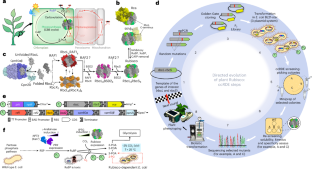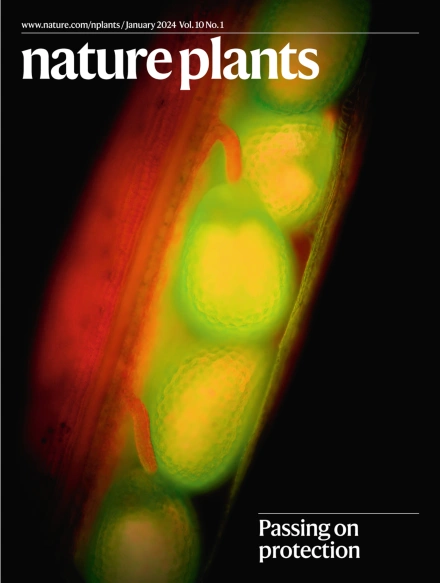Rubisco溶解度和催化开关的实验室进化,以提高植物生产力
IF 13.6
1区 生物学
Q1 PLANT SCIENCES
引用次数: 0
摘要
一种新的用于检测植物核酮糖-1,5-二磷酸羧化酶/加氧酶(Rubisco)突变的大肠杆菌实验室进化筛选已经确定了可以提高植物生产力的取代物,这些突变具有增强的二氧化碳固定能力。选择了一个大亚基催化(Met-116-Leu)突变,使不同植物Rubisco的kcatc增加25%至40%,以及一个溶解度(Ala-242-Val)突变,使植物Rubisco在大肠杆菌中的生物发生提高2至10倍。两种突变体转化为烟草质体rbcL基因对叶片Rubisco产量、光合作用和植株生长均无影响。然而,用编码M116L的低丰度杂交拟南芥Rubisco转化烟草后,植株的指数生长率比未突变的杂交酶提高了约75%,其中A242V的取代使杂交Rubisco产量和植株生长均提高了约50%。我们对具有促进植物生长潜力的突变的鉴定预示着拓宽催化开关Rubisco序列空间的调查,这可以带来更多实质性的植物生产力提高。本文章由计算机程序翻译,如有差异,请以英文原文为准。


Laboratory evolution of Rubisco solubility and catalytic switches to enhance plant productivity
A new Escherichia coli laboratory evolution screen for detecting plant ribulose-1,5-bisphosphate carboxylase/oxygenase (Rubisco) mutations with enhanced CO2-fixation capacity has identified substitutions that can enhance plant productivity. Selected were a large subunit catalytic (Met-116-Leu) mutation that increases the kcatc of varying plant Rubiscos by 25% to 40% and a solubility (Ala-242-Val) mutation that improves plant Rubisco biogenesis in E. coli 2- to 10-fold. Plastome transformation of either mutation into the tobacco plastome rbcL gene had no impact on leaf Rubisco production, photosynthesis or plant growth. However, tobacco transformed with low-abundance hybrid Arabidopsis Rubisco coding M116L improved plant exponential growth rate by ~75% relative to unmutated hybrid enzyme, with the A242V substitution increasing both hybrid Rubisco production and plant growth by ~50%. Our identification of mutations with the potential to enhance plant growth bodes well for broadening the survey of Rubisco sequence space for catalytic switches that can impart more substantive plant productivity improvements. This study demonstrates the power of directed evolution to unlock latent functional potential in plant Rubisco. By identifying mutations that enhance CO2 fixation and solubility, it advances avenues for improving crop photosynthesis and productivity.
求助全文
通过发布文献求助,成功后即可免费获取论文全文。
去求助
来源期刊

Nature Plants
PLANT SCIENCES-
CiteScore
25.30
自引率
2.20%
发文量
196
期刊介绍:
Nature Plants is an online-only, monthly journal publishing the best research on plants — from their evolution, development, metabolism and environmental interactions to their societal significance.
 求助内容:
求助内容: 应助结果提醒方式:
应助结果提醒方式:


